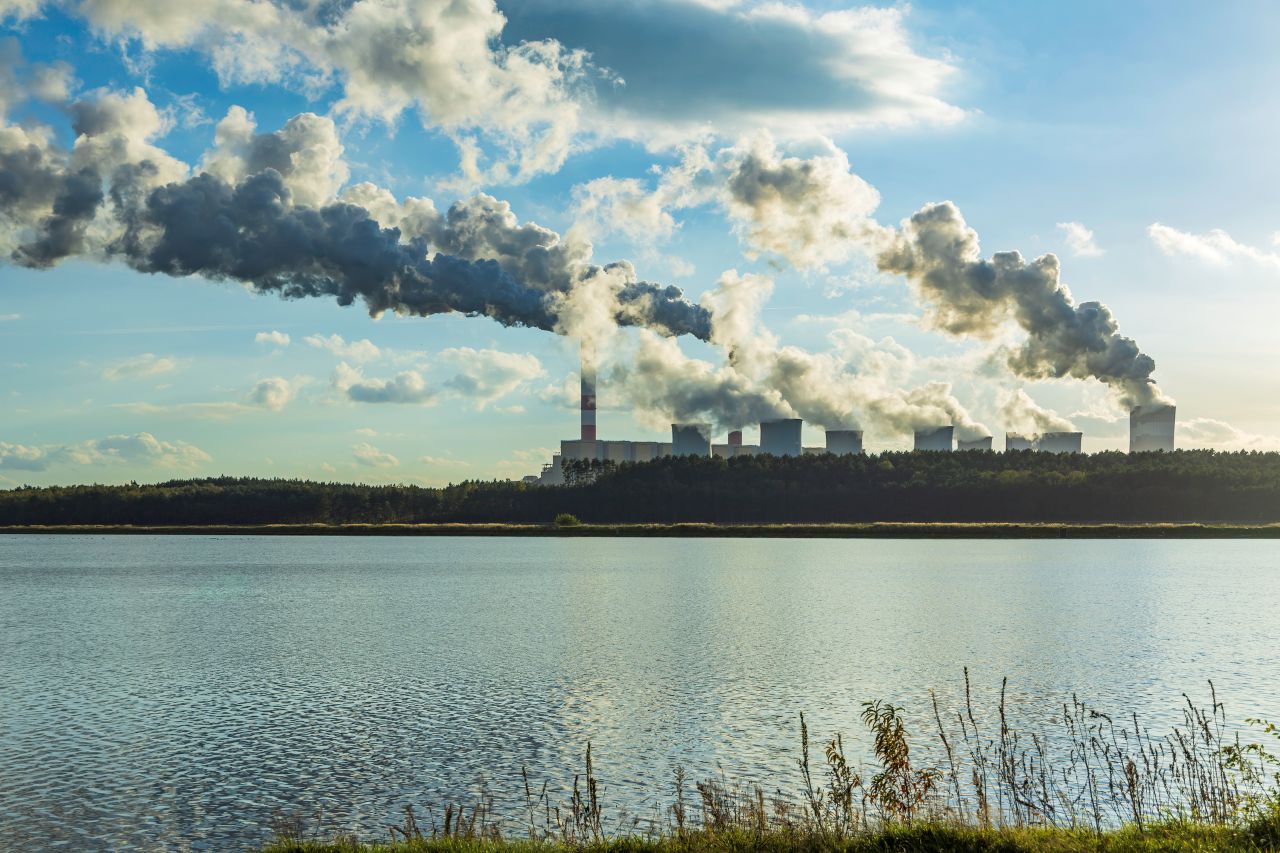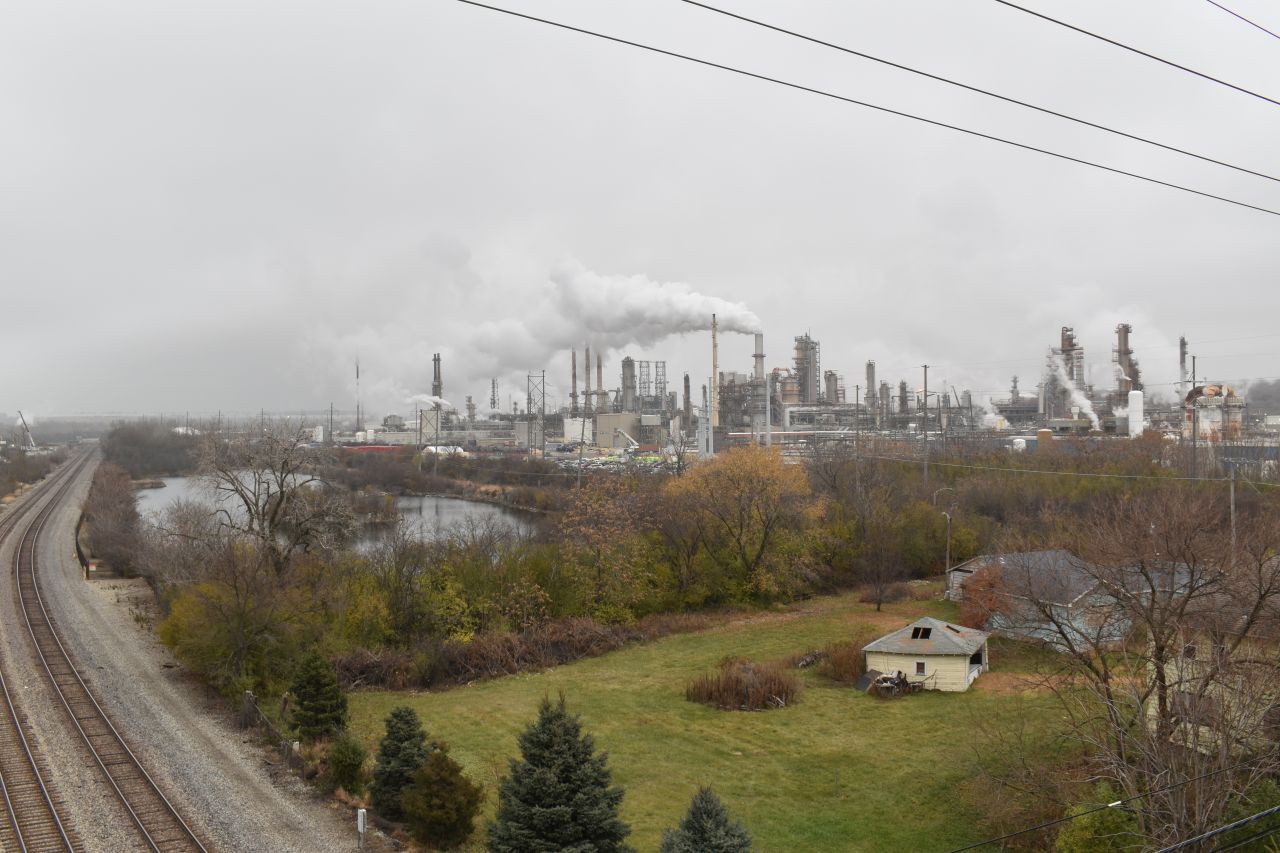Outdated safety rules at LNG terminals include measure meant to prevent accidents

James Hiatt lives in Southwest Louisiana, the epicenter of the liquified natural gas (LNG) export boom in the U.S. Over the past five years, the region has seen three new gas export terminals come online, with another five planned.
The boom in LNG terminals has raised concerns about safety, particularly in hurricane-prone areas such as Lake Charles, which was pounded by severe storms coming off the Gulf of Mexico in 2020 and 2021. Hiatt worked for environmental group Louisiana Bucket Brigade before forming his own nonprofit, For a Better Bayou, in part to advocate for better transparency and accountability from the oil and gas industry and from the government agencies that regulate it.
“Their answer always seems to be ‘just trust us,’” Hiatt said of the LNG companies. “’We have all these other agencies looking into it too, so trust the government, and trust us.’ And for me, that’s just not enough.”
The amount of natural gas sent abroad more than quadrupled from 1.51 trillion cubic feet in 2015 to 6.65 trillion cubic feet in 2021, according to the Energy Information Administration. However, experts say that safety regulations for LNG terminals are lagging. Eight of the nine LNG safety standards overseen by the Pipeline and Hazardous Materials Safety Administration (PHMSA) are outdated, according to a 2020 Government Accountability Office report. These include a fire protection standard that dates to 2001, along with a pressure-testing standard dating to 1992.
Another outdated standard that’s raising concerns among engineering experts is the requirement for LNG companies to simulate the explosion risk of clouds of flammable vapor that could form after a leak in a pipe or tank at the facility.
The explosion risk doesn’t come from methane, the key component of natural gas, which is unlikely to explode in an unconfined space open to the air. Instead, it comes from heavier-than-air hydrocarbons used as refrigerants to cool the methane to a liquid so it can be stored and exported. These gases include ethane, propane, ethylene, and iso-butane.
The risk comes during periods of low or zero wind, when a leak could cause these gases to form a low-lying vapor cloud that could explode if ignited. Jerry Havens, a professor of chemical engineering at the University of Arkansas who’s been raising the issue for years, said the risk affects all seven LNG export terminals currently operating in the U.S., as well as at least 14 new plants that are under construction or about to begin construction.
“All these terminals are approved, and they’re going ahead and building them,” Havens said. “There is a major hazard being disregarded that has the potential for destroying the whole damn plant.”
In a prepared response to a list of questions sent by Oil and Gas Watch News, PHMSA officials said the agency’s staff is currently working on an update to LNG safety rules. According to the Government Accountability Office, the regulatory agenda for the Department of Transportation, which includes PHMSA, states that proposed LNG rules will be issued in July.
“We are in the process of updating ... our regulations to address emerging changes in the LNG industry, including hazards from large quantities of refrigerants stored and processed at LNG export terminals,” PHMSA officials said in the agency’s statement.
So far, no U.S. LNG export terminals have experienced an explosion of the kind that Havens and other experts warn about. A June 2022 explosion at Freeport LNG in Texas was instead caused by methane leaking from a breached pipeline that caught fire from damaged electrical wiring.

But vapor clouds have exploded at other types of facilities in the continental U.S. In 2019, the Philadelphia Energy Solutions oil refinery exploded after a leak of hydrogen fluoride gas from a ruptured pipe formed a vapor cloud. The explosion launched a 38,000-pound tank fragment across the Schuylkill River and led to the shutdown of the refinery, which has been demolished.
A similar explosion occurred at an oil depot near San Juan, Puerto Rico, in 2009. That explosion occurred after gasoline leaked from a storage tank, forming a vapor cloud across the site that detonated, destroying nearby homes and businesses.
The Puerto Rico blast was similar to a massive 2005 explosion at an oil terminal in the county of Hertfordshire in the U.K. That explosion, known as the Buncefield fire, happened after gasoline overflowed from a storage tank, evaporated and formed a vapor cloud that exploded in a blast that engulfed other fuel storage tanks in flames; blew out walls, doors, and windows of nearby buildings; and injured 43 people.
Similar vapor cloud explosions occurred in 2009 at an oil depot in Jaipur, India, and at a Venezuelan oil refinery in 2012.

According to a June 2016 study by the U.K. Health and Safety Executive (HSE), the risks are most severe in low- or zero-wind conditions. “The maximum area covered by the flammable cloud is typically several hundred times greater in nil/low-wind conditions than in light winds,” the study states.
However, current U.S. regulations don’t necessarily require LNG companies to model the risk of explosions with no wind. Oil and Gas Watch News examined environmental impact statements and PHMSA decision letters for the following LNG terminals: Alaska LNG, Cameron LNG, Corpus Christi Liquefaction, Cove Point LNG, Elba Liquefaction, Freeport LNG, Golden Pass LNG, and Sabine Pass LNG. None of the documents discuss the risks of explosions during windless days.
PHMSA regulations instead call for modeling how vapor clouds behave in winds at 4.5 miles per hour or the 90 percent of local wind conditions at the LNG terminal site. That typically equates to a wind speed no lower than 1 meter per second, or about 2.2 miles per hour. PHMSA officials said in the agency’s statement that these sites “do not have zero wind conditions that meet this requirement.”
Some LNG industry representatives have expressed a desire to see updated safety rules. Staff with the Government Accountability Office wrote in their 2020 report that “representatives of three LNG export companies told us that they had incurred costs and application delays because of two outdated standards for modeling the dispersal of flammable vapor that might result from an accident at an LNG facility.”
“Most everybody I’m familiar with who works in this area would like the regulations updated,” said Filippo Gavelli, a consultant with Maryland-based Blue Engineering who works for LNG companies modeling how vapor clouds might disperse or explode at an LNG facility.
Havens, who developed an earlier model used to evaluate vapor cloud explosion, also cited problems with a model frequently used to predict the likelihood of such explosions. The model, known as Q9, was developed by engineering consultant GexCon, which also developed software that can use the model in simulating vapor clouds. The software, known as FLACS for FLame ACceleration Simulator, was approved by PHMSA in 2011 for use in vapor cloud modeling.
Using the Q9 model in FLACS often leads to simulations of explosions with forces around 10 times lower than those seen in real-life experiments, Havens said, citing HSE studies.
“My overall objection, after seven years, is they’re making a really bad mistake with the calculations,” Havens said.
Havens raised issues with Q9 during a PHMSA-sponsored workshop on LNG regulations in Washington, DC, in May 2016. It also included speakers from the HSE, who presented their 2016 review.
Since then, other researchers have noted the same issue with Q9. In a 2021 paper, researchers with the University of Warwick in the U.K. and oil company BP wrote that “Q9 should be used with caution; users should take full account of its bias and variance.” The HSE wrote in 2019 that the model relies on assumptions that aren’t always valid and that “inconsistent results can be produced by different experts.”
Havens said he’s frequently raised the issue with PHMSA, which has continued to allow the use of the FLACS Q9 model in LNG permit applications. In May, the agency held a webinar on the potential cascading effects from a vapor cloud explosion at an LNG facility.
In their statement, PHMSA officials said they “acknowledge and understand the concerns raised in the articles and are currently in the process of testing and validating the use of [Q9] to determine whether this software model is acceptable to demonstrate compliance with PHMSA’s LNG safety regulations,” with a research project on the subject set to be complete later this year. PHMSA has over the past two years introduced multiple rules related to LNG and natural gas, including a requirement passed in April that requires LNG facilities to detect and repair all methane leaks.

Gavelli, who used to work for GexCon, uses Q9 and other models in his work for LNG companies seeking approvals to build export terminals. He currently serves as lead on a $485,344 contract with PHMSA and is evaluating various vapor cloud models that could be required in upcoming regulations. He says he’ll use whatever models PHMSA approves.
“I have no vested interest in getting one model or another approved,” Gavelli said. “We are model users. Right now, FLACS is approved for [vapor cloud] dispersion, so we use it. I have no interest one way or another, and I also have no power to sway any decision.”
Hiatt, who used to work in the oil and gas industry at a tank farm and as a lab technician, said most companies have strong safety messages at the upper management level, along with redundant layers of technology and protocols meant to prevent disasters. He compared these safety layers to slices of Swiss cheese.
“Sometimes, all of those holes line up, and an incident can happen,” Hiatt said.
Lead photo: A U.S. Chemical Safety Board photo shows investigators at the scene of the Philadelphia Energy Solutions refinery, where a vapor cloud exploded in 2019.















